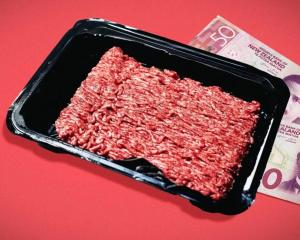
The result was due to sustained high value per tonne and increased volume for lamb, mutton and beef.
While the highlights of the season were record high average values per tonne for lamb and mutton, the average value of beef exports remained high since the marked increase in 2014-15, B+LNZ’s chief economist Andrew Burtt said.
Total lamb exports were more than $3.1 billion, up 25% on 2016-17 and 28% higher than the five-year average. The average value of lamb exports stayed over $10,000 per tonne for the entire season.
While those levels were reached on occasion in 2010-11 and 2011-12, it was not sustained for the entire season.
Total mutton exports benefited from limited international supply and strong demand to reach $618million, up 46% on 2016-17.
Increasing demand for sheepmeat from China, particularly mutton, and tight supply from Australia and New Zealand increased competition for New Zealand’s sheepmeat.Total beef exports exceeded $3 billion, up 14% on 2016-17 and up 17% on the five-year average.
ASB’s latest Farmshed Economics report said lamb prices might be starting to "come off the boil" but they still looked set to remain healthy over the rest of the season.
After peaking at $8.43/kg earlier in the month, prices had dropped 13c/kg or 1.5%. But prices still remained extremely high and, with the Christmas trade under way, the bank expected prices to remain at or around those current levels "for the next month or so".
Looking over the rest of the season, prices also looked set to remain healthy. Lamb supply was constrained in Australia while Chinese demand remained firm. Local supply was also tight.
Traditionally, lamb prices fell by an average of $1.20/kg from the spring peak through to the autumn low.
On that basis, the bank expected autumn per kg prices to still "start with a seven".
"Even in a worst case scenario, prices are likely to be $6.50/kg or above come the autumn."
Silver Fern Farms latest market update said UK Christmas retail promotion forecasts were down on last year.
Once the last Christmas vessels left at the end of this month, a significant shift towards frozen product was expected. That would affect returns in the market and schedules. The company’s forward sales through to the end of November were strong, albeit off easing prices.
In Australia, a long, dry winter, expensive feed and scant grass on the ground has farmers destocking their paddocks and sending more animals to the abattoir. The sheep slaughter rate is at a 10-year peak.
Data from the Australian Bureau of Statistics showed a 4.2% monthly rise in sheep slaughters during August and the 12-month total was now 312,400 animals, or 46.1%, higher than the same period to August 2017.
The rolling east coast dry means many farmers have been forced to ship large numbers of sheep and cattle to market each week as they struggle to carry their livestock through severe drought.
And, despite a few storms and scattered falls over the past week, Meat and Livestock Australia’s markets intelligence manager Scott Tolmie expected poor conditions to continue and slaughter rates to remain high.
The number of cattle slaughtered in abattoirs or by smaller butchers over the month of August increased by 7500 head, or 1.1%. About 65,800 or 10.7%, more cattle have been slaughtered than the same time last year.
— Additional reporting: AAP













